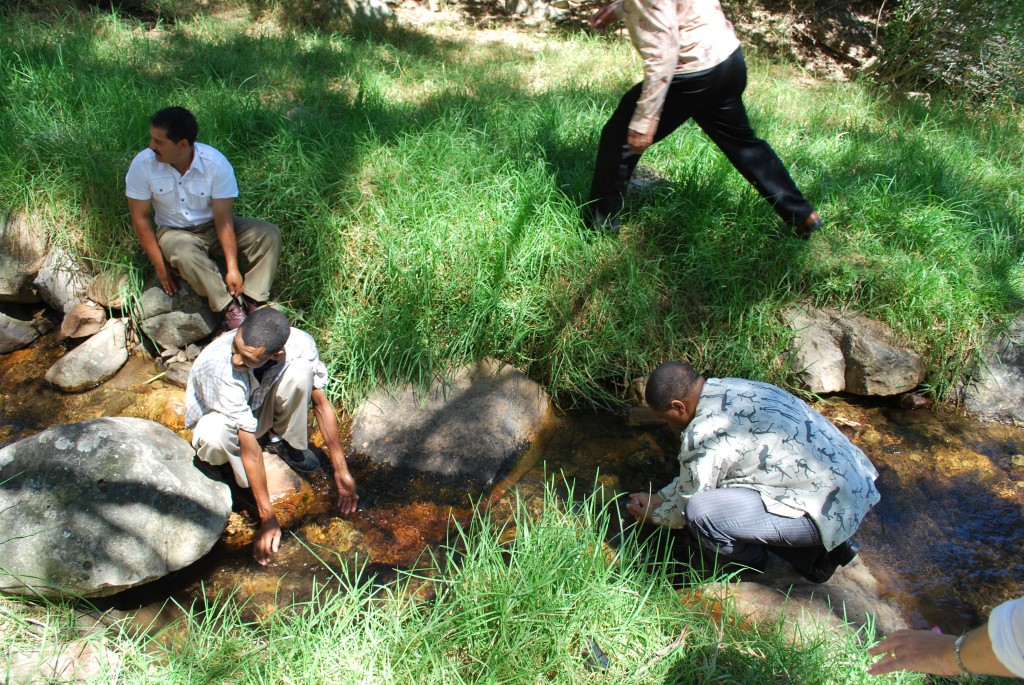
Between the 21st of January and the 13th of March 2010 we were invited to conduct a three-week research residency in Cape Town. ‘The naming and claiming of space’ began by investigating the way in which locations in Cape Town have been repeatedly renamed, revealing historic and contemporary demographics of power, culture and segregation, before looking in more detail at the lack of conventionally mapped references to Cape Town’s indigenous heritage. The residency culminated in a series of site-specific interventions and events that took place during the Infecting the City festival.
Activity #5: The gathering of clouds
As part of our programme for Infecting The City we facilitated ‘The gathering of clouds’, a guided tour of //Hui!Gaeb (an indigenous name for Cape Town that could be translated as ‘where the rain clouds gather’) that was conducted by Bradley van Sitters of the Khoe San Active Awareness Group, accompanied by traditional Khoe healers, herbologists and the chief of the Gorachoukhoe. The tour was scheduled to last approximately three hours and include a hands-on workshop about medicinal indigenous herbs, an introduction to the Khoe language, and performances by Jethro Louw from the Khoi Khonnexion.
The journey started at Deer Park, before traveling to each of the four ‘sacred sites’ of execution (listed in connection with the herb gardens). Each participant collected a stone from Deer Park to be placed at one of these sites, referring to the Khoe tradition that you should always leave something behind at a sacred site to help heal the memory that resides there, while reflecting on the first part of our journey, which followed the path of a river that once carried stones down into Cape Town.
At each sacred site a short ritual was enacted and various members of the local Khoe and San community were invited to speak, offering a mix of personal, historical and political viewpoints. The language lesson and Jethro’s full-length performance were held at the Khoisan take-away, during which refreshments were served.
The tour had two functions. For festival visitors it was a rare occasion to engage with the local Khoe community, their customs, and their concerns, while for Bradley van Sitters it was the first time he would publicly present what we had been doing to the wider Khoe and San community, opening up this process for debate.
Due to the length of the procession not everybody was able to stay for the entirety. The festival visitors eventually left the tour, leaving primarily representatives of the Khoe and San community to complete the procession. It was interesting to watch how the purpose and presentation of the tour shifted as the audience demographic shifted, eventually taking on a more political and spiritual tone.
One interesting moment came when a smart-shirted man was invited to speak on behalf of the ‘king’ (A. Messelaar, head commissioner to the royal house of his majesty Adam Kok V). This was received with a formal clapping of hands, something that felt completely alien to the context and delivery of the procession. It made you wonder if the accumulation of political influence always results in the Europeanisation of an indigenous culture. Another memorable (and contrasting) ‘sound-effect’ came when Bradley van Sitters was teaching everybody how to produce the clicking sounds used in the Nama language (closely related to the Khoe/San languages). The take-away and adjacent subway was filled with the beautiful chatter of clicks.


